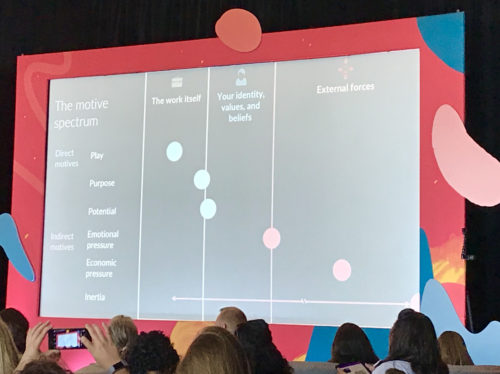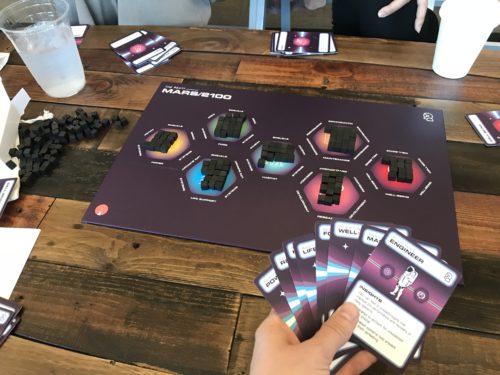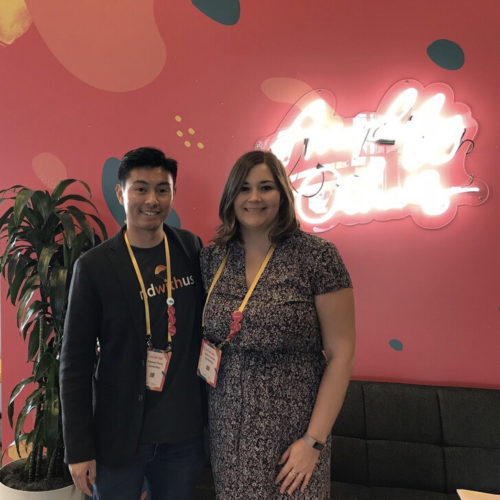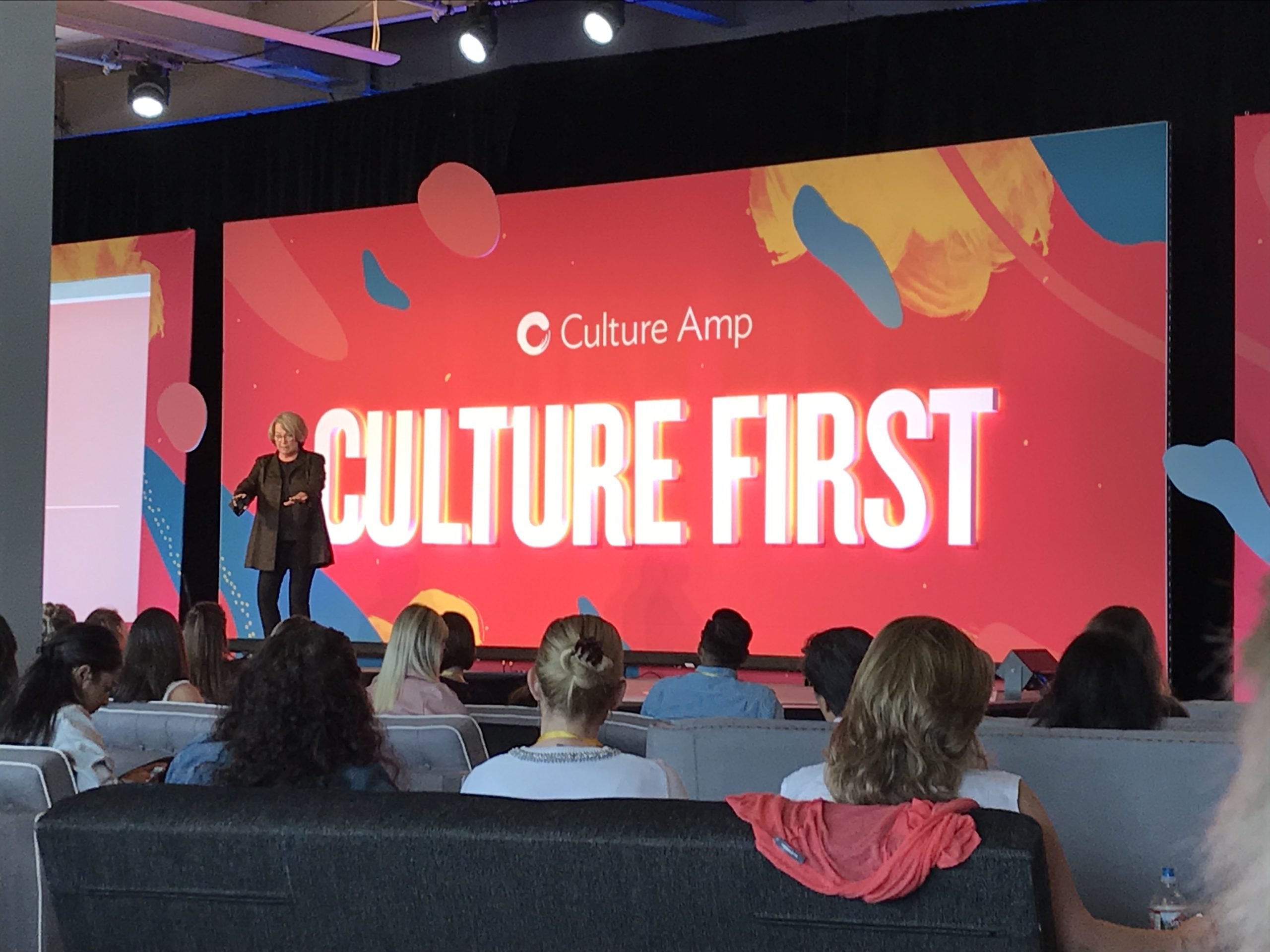A few weeks ago, I was able to attend the inaugural Culture First in San Francisco, a conference for culture-focused HR and operations professionals. It was inspiring to connect with culture leaders from all over the world. One attendee came all the way from Israel to be there!
Sessions were categorized under the three focus areas of Diversity & Inclusion, Culture as a Competitive Advantage, and New Ways of Working. The big takeaway was that putting culture first in your organization doesn’t detract from your business objectives, but rather that — if done right — culture can form the basis for meeting or exceeding your company’s goals.
Many of the speakers confirmed that culture isn’t about perks like foosball or snacks in the office. Workplace culture is based on shared values that set the context for how people show up at work, and it should underpin everything they do while there. Tatyana Mamut, a former executive at Salesforce and Amazon Web Services, talked about building anchors for workplace culture based on clear principles with mechanisms that maintain and reinforce behaviours that align. This is about creating stories that help employees connect to your values. Speakers like Lucia Guillory, Head of People at Patreon, reinforced this concept by emphasizing that your values should be more than buzzwords, but stories that employees can use in their workday to frame their approach to how they work.
I was able to take something of value from every workshop that I can apply in my role at Dyspatch, but here are some highlights from my three favorite sessions
The Science of Total Motivation || Lindsay McGregor
After Lindsay’s talk, I was already looking at her book on Amazon. She helped me to look at motivation in a different light by framing her talk with a simple assertion: “ Why we work, determines how we work.” And to understand why people work, you first need to look at motivation.

Direct motives:
Play: An employee comes to work because they enjoy their daily tasks.
Purpose: They see value in the goals of the company.
Potential: They see the potential of their work to improve their future or the future of
others.
Indirect motives:
Emotional pressures: An employee experiences external emotional pressures like guilt.
Financial pressure: They need the paycheck.
Inertia: They come because that’s what they did yesterday.
Employees that come to work for direct motives have better adaptive performance and are able to change their performance based on the situation they find themselves in, whereas indirect motives can lead to teams that do only the bare minimum, using tactical skills that are directly communicated to them.
By looking at why your employees come to work, you can find ways to improve your culture. Simple right? Well, not really. I’m looking forward to reading her book to find more ways to increase play, purpose, and potential in the Dyspatch culture.
Mars 2100 – A future of work simulation || Aaron Dignan

This interactive session involved playing a board game. Kudos to the organizers for putting this after lunch on the first day. It was a great way to ease back into an information-packed afternoon. Plus, I love board games, so they had me hooked right away.
The premise of the game was that we were a building a colony on Mars. Every round, we were given a crisis to address, like the colony is running out of food or the colony is experiencing some ill health effect, that sort of thing. Then each player chose two areas to invest in that round, based on the crisis, choosing from well-being, research, maintenance, habitat, food, life support, and power. Each of us had a role, like doctor or physicist, that came with some extra insight on where best to invest in certain situations. The hiccup was that at the start of the game we weren’t allowed to talk to one another about how best to address the problem, we had to invest in an area for two rounds in a row, and the captain had to choose three investment areas to cancel out. These extra rules made it difficult for our team to coordinate where to invest and share the expertise our character provided. As the game went on, these extra rules were eliminated one at a time.

The takeaways were pretty straightforward. It was much easier to decide where to invest when the doctor could tell us how they would address ill health and our team was better able to address the crisis when we could choose a different investment every round. Similarly, an organization that turns to experts when a problem arises and reacts uniquely to new challenges stands the best chance at success. In the end, the winning team was able to balance the short term crisis with the long term goal of growing the population and build a thriving colony. When the game was finished, it was interesting to compare strategies with different teams and see how their approach differed from ours.
Culture Risk: The 5 hidden risks threatening the health of your organization and how to manage them || Tatyana Mamut
Tatyana provided a strong business case for assessing the culture risks that your organization faces. All of the risks she identified affect both your product and your customers.
Scaling risk: This is a reminder that as the size of your company grows, your approach to culture should as well. Generally, companies need to adapt at 40, 140, and 700 employees.
Fragmentation risk: When a company develops multiple cultures or subcultures, you need to either create cohesion or normalize separate cultures.
Attrition risk: Attrition is normal. Employees come and go all the time, but as HR professionals we need to manage this proactively and look at the skill sets that will most help the company succeed.
Conformity risk: All levels of your organization should be as diverse as your customer base. Hire for culture add rather than culture fit, to ensure that your employees are as diverse as possible.
Stagnation risk: When creative ideas aren’t accepted or encouraged.
As part of this session, we thought about the risks within our organizations. Tatyana highlighted that at around 40 employees, it becomes less feasible for the c-suite be connected with each employee and can lead to decreased employee connection with the purpose and values of the company. Dyspatch has grown to nearly 40 employees so I took special interest in the scaling risk. This was a great thought experiment and one that I will definitely take back to my workplace.

Culture First was a very full two days of learning! I’m still working through my notes and creating lists of resources that I want to read and share with my team. I’m looking forward to seeing what they plan for the conference next year.
